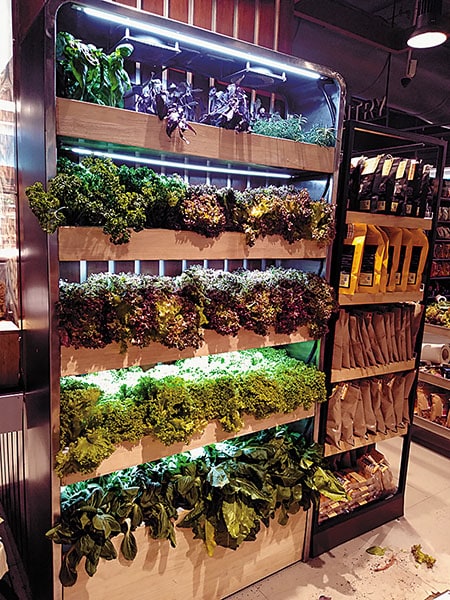
How India's hydroponic farmers are building businesses
Urban hydroponic farmers are making it possible to eat fresh, pesticide-free produce, with no soil use
.jpg) Herbivore Farms, in Mumbai's Andheri, is spread across 1,000 sq ft and grows about 2,500 plants
Herbivore Farms, in Mumbai's Andheri, is spread across 1,000 sq ft and grows about 2,500 plants
In the middle of an industrial building in the Andheri East neighbourhood of Mumbai is a farm. It is spread across 1,000 sq ft and grows 2,500 plants. It is no ordinary farm. The hum of an air conditioner greets visitors into the room, tube lights replace sunlight, and there’s no soil on the patch.
Herbivore Farms is an example of a newly popular and successful type of urban farming—hydroponics. Simply put, it is growing plants in water. Soil is replaced by a water solution that is rich in macronutrients like nitrogen, potassium, phosphorous, calcium nitrate and micronutrients like manganese, zinc etc. A ‘grow system’ controls the balance of nutrition, humidity and temperature, uses less water than soil-based farming and increases yield without chemicals or pesticides.
“There are many advantages to urban farming. The land requirement is quite low, water consumption is 80 percent less, the water is recycled and saved, it is pesticide-free and in cases of high-tech farms there is no real dependency on the weather,” says hydroponic farmer Ajay Naik of Letcetra Agritech in the Sattari district of Goa.
Hydroponic farming is setting up roots all across India. Sakina Rajkotwala and Joshua Lewis, of Herbivore Farms, have come into focus in the last year. In Manori, Linesh Pillai started Terra Farms as a pilot project before taking the idea countrywide. Delhi has Triton Foodworks; Noida has Nature’s Miracle; Chennai has Sriram Gopal’s Future Farms and Rahul Dhoka’s Acqua Farms; and Gurugram-based company, Barton Breeze, has six farms across Haryana, Rajasthan, Uttar Pradesh, and Uttarakhand.
.jpg) Sakina Rajkotwalla quit her job at Magic Bus to start Herbivore Farms;
Sakina Rajkotwalla quit her job at Magic Bus to start Herbivore Farms;Image: Ronit Sarkar
“Hydroponics and other soil-less farming techniques can help us take our agriculture and farming industry to the next level,” adds Naik.


_s.jpg?impolicy=website&width=122&height=70)
.jpg) Rahul Dhoka at his 80 sq ft terrace farm in Chennai
Rahul Dhoka at his 80 sq ft terrace farm in Chennai Terra Farms, which is started by Linesh Pillai in Mumbai’s Manori last year
Terra Farms, which is started by Linesh Pillai in Mumbai’s Manori last year 













